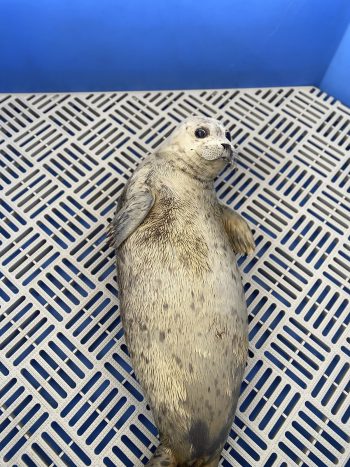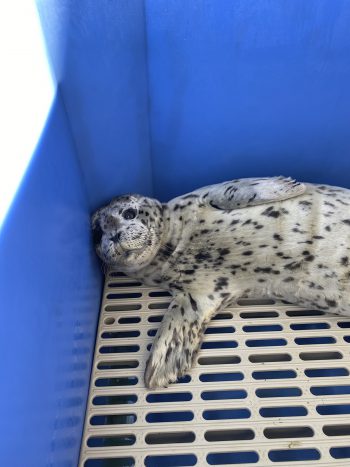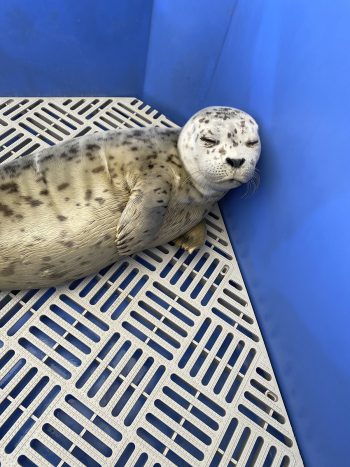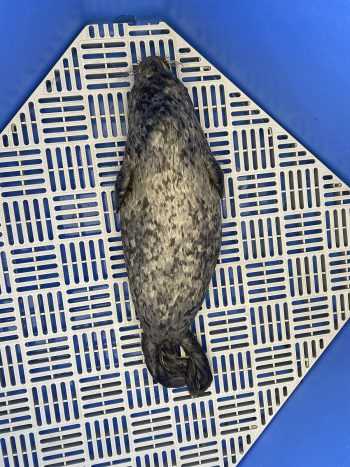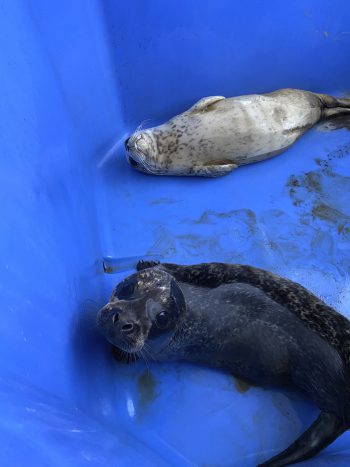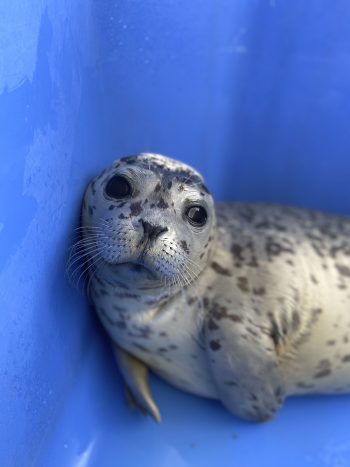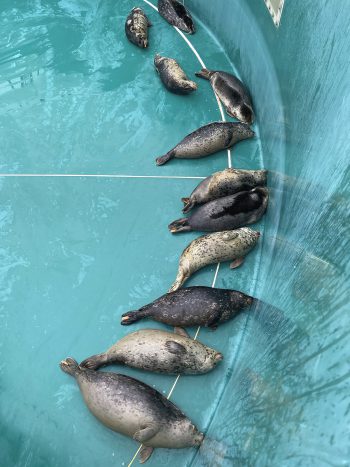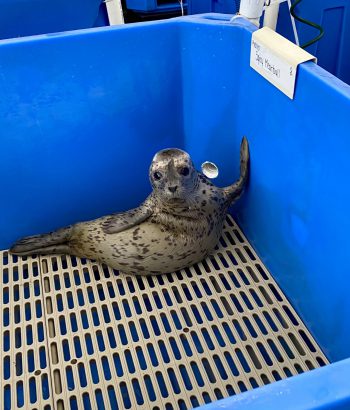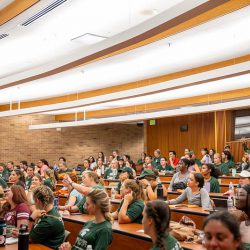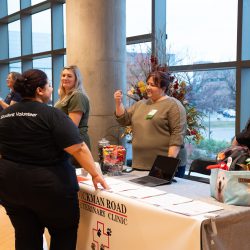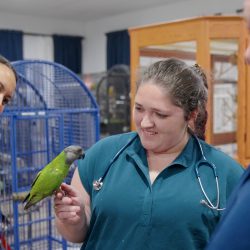Kyle Kansman, DVM Class of 2022, has a passion for wildlife rehabilitation. He's had numerous experiences in the field working with animals at conservation centers, and along with classmate Maddie Chilcote (also DVM Class of 2022), he hosts A Walk on the Wild Side: A Veterinary Podcast. He also recently completed an externship at the Vancouver Aquarium and the Marine Mammal Rescue Centre. Take a look at his experience:
Harbor Seal Venipuncture:
These two pictures were taken as I was performing venipuncture on harbor seal pups for pre-release evaluation. Before going back to the wild, every patient has blood collected for a complete blood count (CBC) and serum chemistry to help ensure that there are no major red flags prior to release. In older harbor seal pups and adults, the plantar interdigital venous plexus on their hind flipper for venipuncture (as pictured) is a good area to use for blood collection. Harbor seals also have an extradural intervertebral venous sinus, or essentially a pool of blood between the caudal (last) few lumbar vertebrae, and this area is commonplace for blood collection for younger pups before they “chunk up” and develop more blubber.
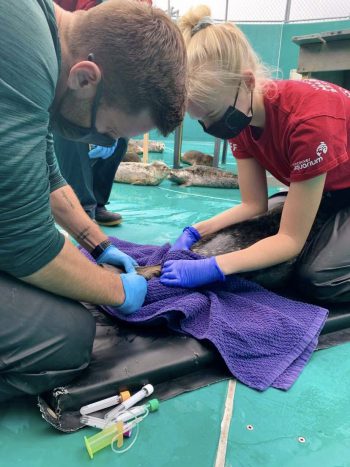
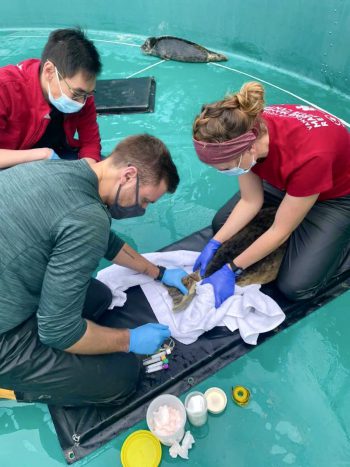
Stellar Sealion Release:
This is Sandy, a Stellar Sealion who was admitted to the Marine Mammal Rescue Centre (MMR), the marine mammal rehabilitation facility at Vancouver Aquarium, prior to my externship after suffering from multiple, generalized tonic-clonic seizures. The exact etiology (cause) was not confirmed, but neurologic disease secondary to domoic acid toxicosis was the primary concern for Sandy’s epileptic episodes. Despite Sandy’s scary start in her rehab journey, she continued to improve and had no major appreciable neurologic deficits, and therefore, was eligible for release! Sandy was returned to the ocean close to where she was found on Vancouver Island, and while she was a little unsure of her new “big open pool,” she finally made her way out of the bay successfully. Sandy embodies the true resiliency of wildlife species and how so many patients continue to surprise me as they push past their impediments despite when the odds are stacked against them.
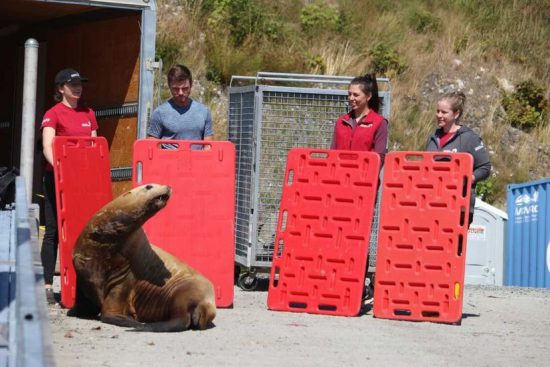
Kaitlyn:
Kaitlyn was an orphaned harbor seal pup that was brought to MMR earlier in the summer. She originally struggled with chronic intermittent episodes of diarrhea and was routinely on antibiotic therapy. With her history of chronic diarrhea, probiotics were brought up and investigated as a potential therapeutic option for her. Toward the end of my externship, Kaitlyn was doing well at the rescue centre. She was fully weaned after figuring out how to eat fish on her own and her diarrhea seems to finally be resolving, possibly as a result of the administration of probiotics. Her case was an interesting one for me because it allowed me to extrapolate what’s been studied with chronic diarrhea and antibiotic therapy in small animal medicine and apply it to a wildlife patient. This just goes to show how a strong background in clinical medicine, regardless of species, is very important in veterinary medicine.
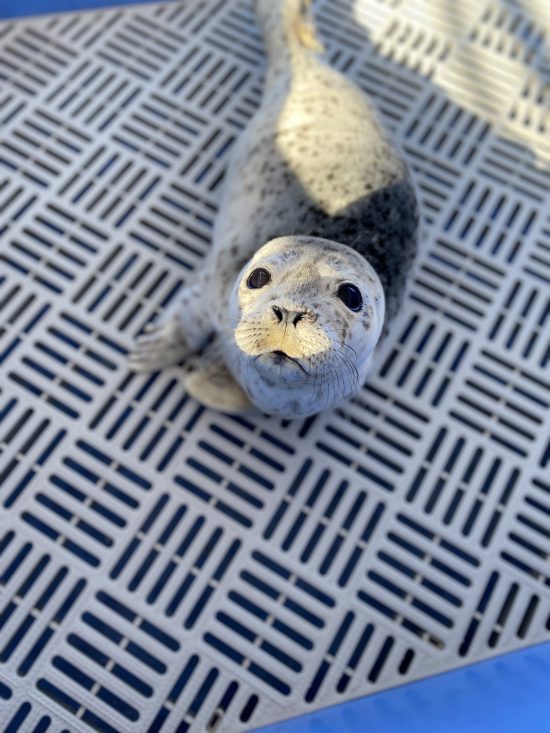
“Learning How to Seal:"
The majority of the harbor seal pups admitted to MMR are orphaned or abandoned within the first few days or weeks of their life, but many times the underlying reason as to why these pups are stranded remains unknown. At the beginning of their time at MMR, they are gavage feed milk matrix, a product designed to be similar to the nutritional content of their mother’s milk. As the pup's age, they are slowly weaned off the milk product and onto fish until they are eating fish in the water all on their own, a process often called “fish school.” Harbor seals learn to hunt instinctively, but let’s just say sometimes the lightbulb takes a while to turn on for some seals. This harbor seal pup is named Jools and his journey of “learning how to seal” was not the quickest. Myself, and the staff at MMR, certainly had to get creative with his fish schooling in order for him to finally have that “aha moment,” but I’m happy to say Jools eventually graduated fish school and joined the big kids in a pool in the last week of my externship.
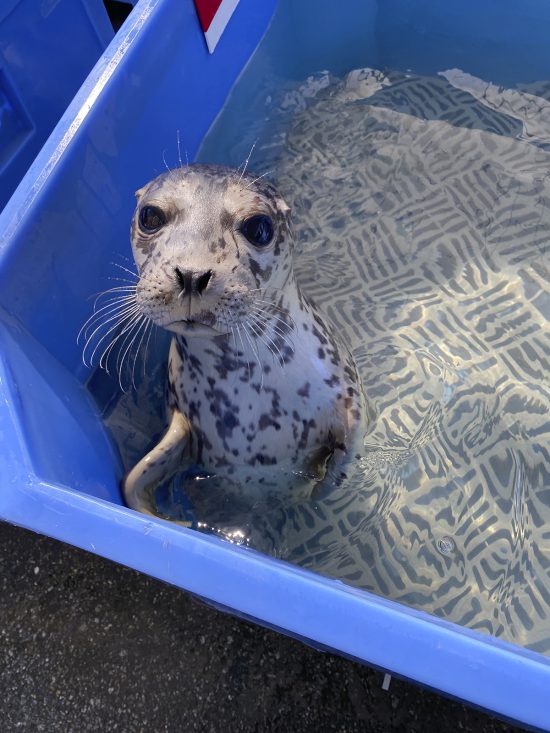
Link:
This is Link, a weanling harbor seal pup that was admitted during the first week of my externship. He was found abandoned on a beach emaciated, severely dehydrated, and with multifocal wounds all over his body (likely secondary to crows/ravens). Despite his condition on admit, Link improved quickly with proper nutrition, hydration, and wound management. About a week later after he was brought in, Link began to develop unilateral nasal discharge (epistaxis initially, then mucopurulent) and had increased respiratory effort. This presentation given his age and clinical signs is commonly seen with lungworm in harbor seal pups. As pups transition to fish in the wild, they are increasingly exposed to lungworm, as fish have been identified as potential intermediate hosts for lungworm. The weaning process itself in the wild can lead to nutritional stress and immunocompromise in these pups, therefore a lungworm infection can certainly exacerbate their condition. Thankfully, the veterinary staff at MMR/Vancouver Aquarium is amazing and very familiar with lungworms. So, once the lungworm protocol was started for Link, he improved quickly and started acting more and more like a happy, healthy seal pup.
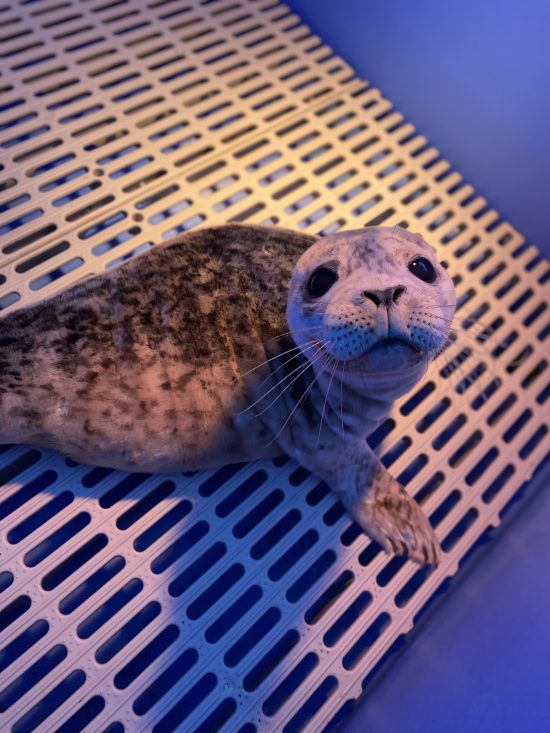
Mazurka:
This is Mazurka, another orphaned harbor seal pup who was admitted to MMR. Mazurka’s weaning process was slow as she had intermittent episodes of regurgitation and hyporexia (a reduction in appetiteFDY). Despite her slow fish schooling process, she did end up learning how to eat on her own. However, not too long after she was on her own, she had additional episodes of regurgitation and periods of anorexia. Initial diagnostics were performed (e.g., CBC/serum chemistry, thoracic and abdominal radiographs) and were overall unremarkable. A course of antiemetics (Maropitant) and prokinetics (Metoclopramide) were initiated as well as modifications to her feeding regimen and improvements were seen. Unfortunately, after discontinuation of the antiemetic and prokinetic agent, her intermittent regurgitation recurred. During my last week, she was re-prescribed her medications and was continuing to show marked improvement again. While I don’t have the final outcome of her case, I of, course have asked for periodic updates from the MMR staff about sweet little Mazurka and I’m hoping for a happy ending.
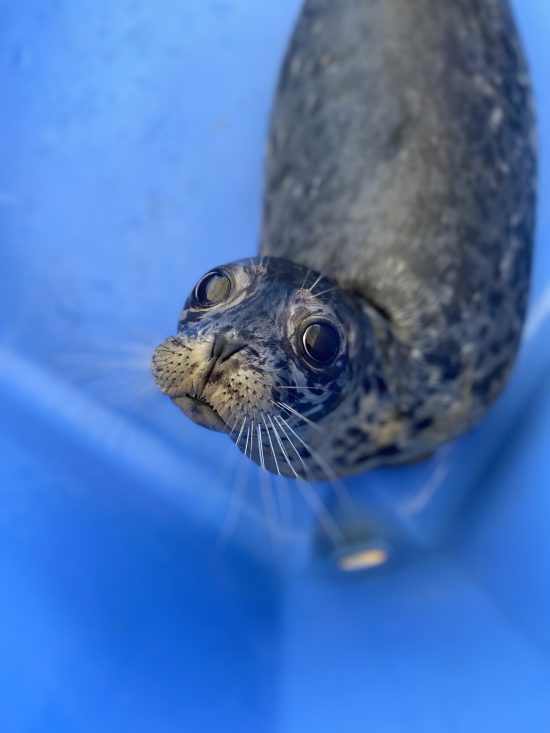
Collection of Sleep Photos and Pup Pictures:
Enjoy this constellation of sleepy harbors seals and various pups being cute. One of my favorite parts of working with seals in wildlife rehab is seeing all the different personalities they have. There was never a day when working at MMR that I did have a big smile on my face or laugh at some of the weird things these pups did.
The bottom photo is what I like to call "Sup Bro" and it features one of my favorite sea lion friends, Spicy Meatball.
